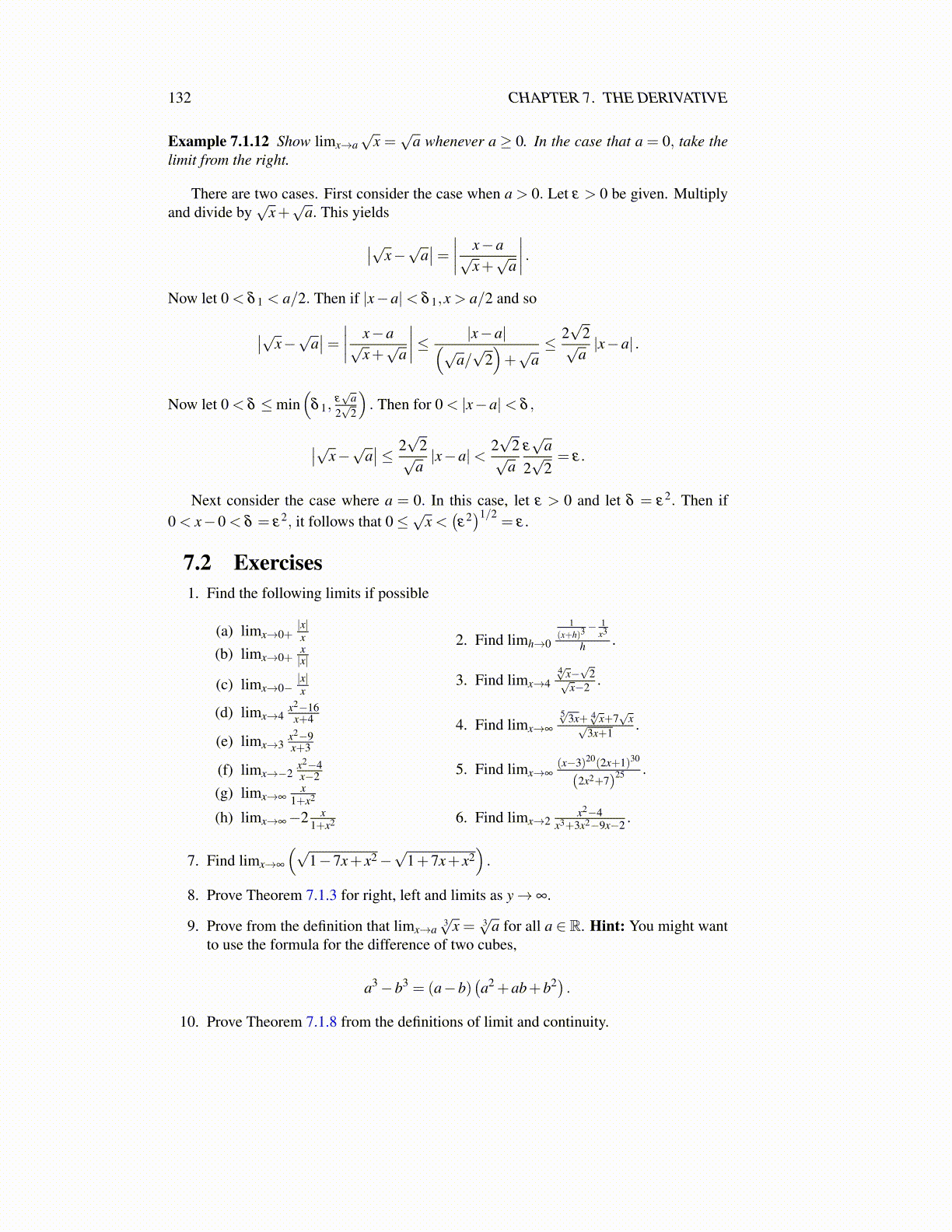
132 CHAPTER 7. THE DERIVATIVE
7.3 The Definition of the DerivativeThe following picture of a function y = o(x) is an example of one which appears to betangent to the line y = 0 at the point (0,0) .
y = o(x) y = ε|x|
δ(0,0)
You see in this picture, the graph of the function y = ε |x| also where ε > 0 is just apositive number. Note there exists δ > 0 such that if |x| < δ , then |o(x)| < ε |x| or inother words, |o(x)||x| < ε. You might draw a few other pictures of functions which would havethe appearance of being tangent to the line y = 0 at the point (0,0) and observe that inevery case, it will follow that for all ε > 0 there exists δ > 0 such that if 0 < |x|< δ , then|o(x)||x| < ε.In other words, a reasonable way to say a function is tangent to the line y = 0
at (0,0) is to say for all ε > 0 there exists δ > 0 such that if |x| < δ then |o(x)||x| < ε. In
other words, the function y = o(x) is tangent at (0,0) if and only if limx→0|o(x)||x| = 0. More
generally, even if the function has values in F or something even more general where it isnot possible to draw pictures, the following is the definition of o(x).
Definition 7.3.1 A function y = k (x) is said to be o(x) if
limx→0
|k (x)||x|
= 0 (7.5)
As was just discussed, in the case where x ∈ R and k is a function having values inR this is geometrically the same as saying the function is tangent to the line y = 0 at thepoint (0,0). This terminology is used like an adjective. k (x) is o(x) means 7.5 holds. Thuso(x) = 5o(x) , o(x)+o(x) = o(x) , etc. The usage is very imprecise and sloppy, leaving outexactly the details which are of absolutely no significance in what is about to be discussed.It is this sloppiness which makes the notation so useful. It prevents you from fussing withthings which do not matter. This takes some getting used to.
Now consider the case of the function y = g(x) tangent to y = b+mx at the point (c,d) .
(c,d)
y = g(x)y = mx+b
Thus, in particular, g(c) = b+mc = d. Then letting x = c+h, it follows x is close to cif and only if h is close to 0. Consider then the two functions
y = g(c+h) , y = b+m(c+h) .
If they are tangent as shown in the above picture, you should have the function
k (h) ≡ g(c+h)− (b+m(c+h)) = g(c+h)− (b+mc)−mh
= g(c+h)−g(c)−mh